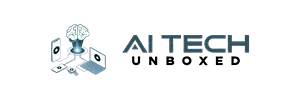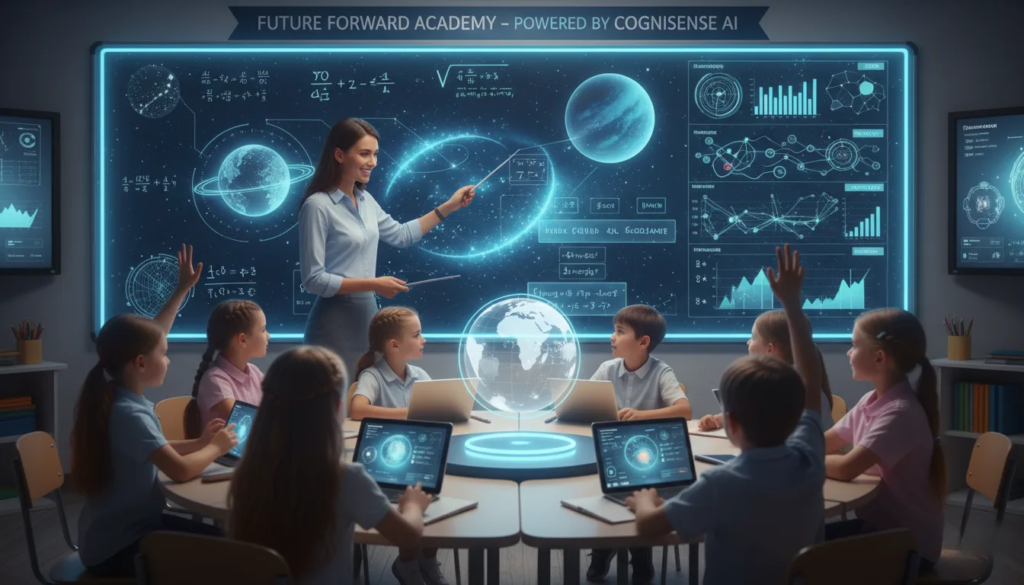AI for Teachers: Revolutionizing Education with Human-Centric EdTech AI
Introduction: The Human Touch in the Age of EdTech AI
Artificial Intelligence is no longer confined to the domain of data scientists or tech entrepreneurs. Today, AI for teachers has moved to the epicenter of education, helping empower educators with new horizons and solutions that foster both efficiency and empathy. The fusion of technology and teaching isn’t about replacing the chalk with code; it’s about unleashing creativity and compassion on a larger scale. As EdTech AI matures, it’s rewriting what’s possible in modern classrooms while keeping the human touch at the core.
Teachers have always worn many hats, from mentor and guide to counselor and assessor. Yet the administrative burdens—grading, report generation, lesson planning—often consume a majority of their time. AI lightens this load. With adaptive platforms, detailed analytics, and automation, teachers are spending less time on paperwork and more time on meaningful interactions. Instead of viewing AI as a rival, many forward-thinking educators embrace it as their steadfast ally.
The strength of AI for teachers is its ability to individualize learning pathways. Students are not statistics—they’re individuals, each with unique stories, struggles, and strengths. AI-powered tools can detect learning gaps, track individual progress, and recommend custom materials that set each learner up for success. At the same time, teachers can use these data-driven insights to personalize encouragement and guidance, building the trust that forms the heart of any successful classroom.
This collaboration between teachers and AI is especially crucial for disadvantaged or remote communities. When resources are stretched thin and classes are oversized, EdTech AI enables equity by supporting differentiated instruction at scale. Language barriers can be bridged with automated translation; foundational gaps filled with personalized recommendations; and student struggles spotted earlier, all while encouraging more hands-on mentoring by human teachers.
To truly realize the potential of technology in education, we must recognize that AI for teachers is not a machine-powered replacement, but rather a human-powered revolution. By supplying insight and automation where it’s needed most, AI liberates teachers to focus on what they do best: inspiring students, modeling empathy, and lighting the spark of lifelong learning.
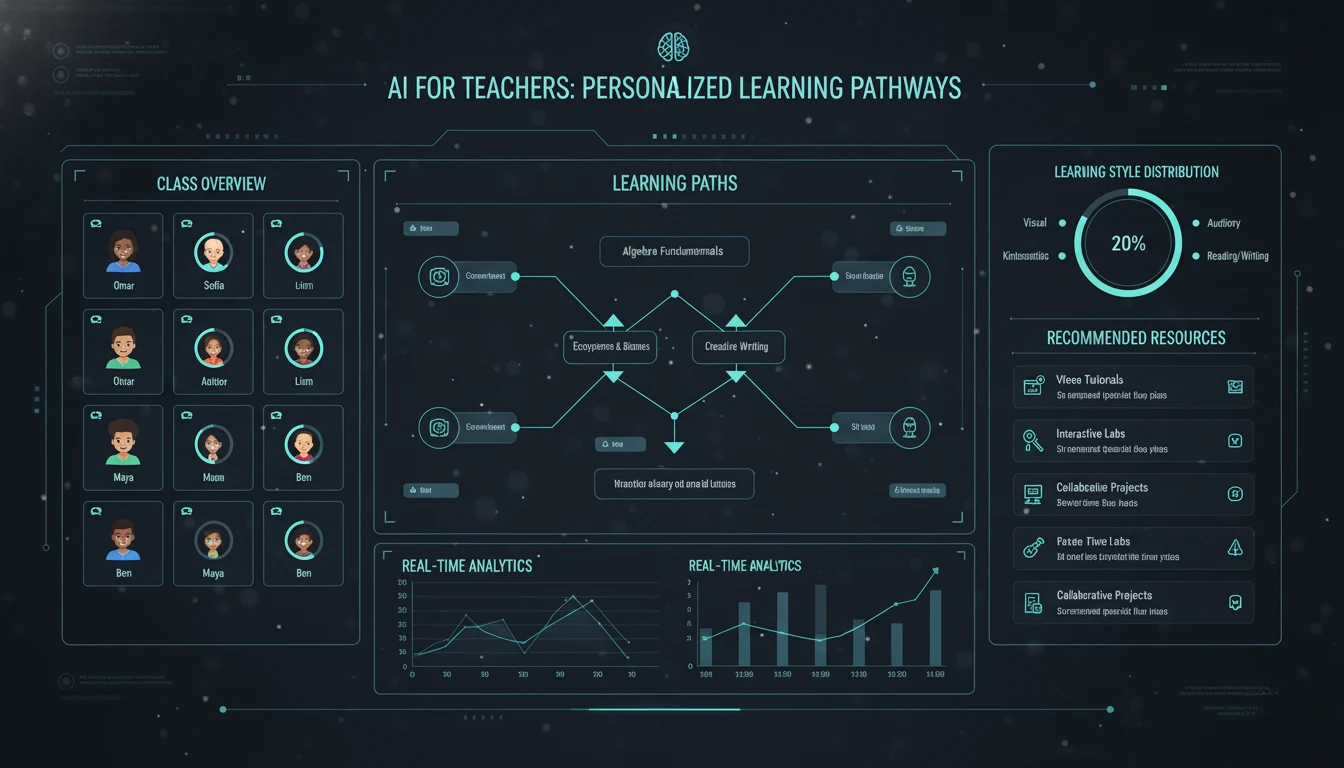
Personalization at Scale: Every Student Matters with AI for Teachers
One of the most significant breakthroughs of AI for teachers is its unprecedented ability to personalize learning at scale. In traditional classrooms, differentiation often means teachers juggling lesson modification for multiple ability levels—a feat that is as exhausting as it is essential. AI takes the heavy lifting out of this process. Platforms like Century Tech, Khan Academy’s AI tools, etc. analyze real-time data from quizzes and assignments to determine exactly where each student is excelling or struggling.
For teachers, these platforms act as a compass. Instead of flying blind, instructors can identify students who need extra support in mathematics, advanced readings in literature, or emotional check-ins after a tough week. Custom assignments, challenges, and feedback can be generated automatically, ensuring that every learner’s needs are met without sacrificing classroom cohesion. What once took hours of manual review now happens in moments.
The impact of personalization isn’t just academic. By giving each student a unique path, EdTech AI helps boost motivation, self-esteem, and engagement. Students stay curious because the material adapts to them, not the other way around. Teachers report better behavior, higher attentiveness, and stronger academic outcomes from classrooms using AI-based adaptive tools—proof that emotional and academic needs can be met together.
Remote and hybrid learning models, once a necessity during the global pandemic, are now a permanent part of the educational landscape. AI smoothes the transition, ensuring that even when students are miles apart or learning on different schedules, they experience the continuity and care of personal instruction. This is especially important for students who are neurodivergent, have special education needs, or are learning a new language, as AI offers precise scaffolding every step along the way.
Finally, parents also benefit from these innovations. AI-generated reports demystify student progress, providing clear visualizations, actionable recommendations, and frequent updates. Collaborative digital spaces ensure all stakeholders are on the same page, forging a community where every child feels truly supported.
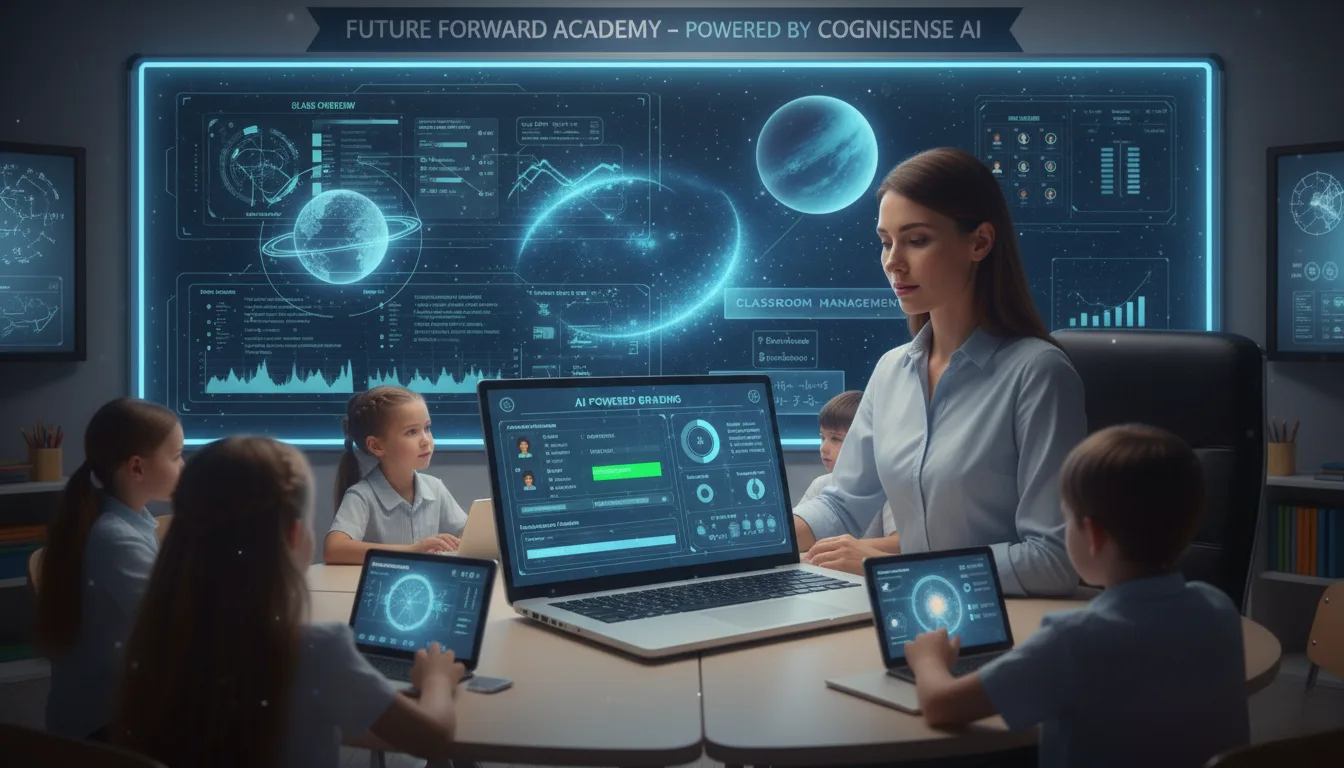
Workload Relief: Automating the Invisible Tasks in Teaching
Many outside the teaching profession underestimate the sheer volume of “invisible” work educators do each week. AI for teachers transforms this reality by automating processes from attendance to analytics, lesson preparation to assessment—giving back valuable hours that were once lost to paperwork. The result is a palpable reduction in teacher burnout and a renewed sense of professional satisfaction.
AI-driven grading solutions analyze not just correct or incorrect responses, but also writing structure, argument quality, and even creativity—freeing teachers from hours of tedious marking without sacrificing rigor or fairness. Feedback is generated instantly, and teachers can fine-tune assessments with a human touch, focusing on the nuances that matter most. Meanwhile, systems like Classcraft and Edpuzzle automate the creation of interactive lessons, simultaneous translations, and formative quizzes tailored to student needs.
AI-powered classroom management tools also enhance communication with parents and colleagues. Progress bars, early-warning notifications, and achievement badges keep students motivated and parents informed. Administrative hurdles—like compiling end-of-term reports, updating digital gradebooks, or sending reminders—are handled by digital assistants that work round the clock, unfazed by workload or routine.
In terms of planning, EdTech AI offers vast libraries of standards-aligned projects, assignments, and enrichment activities that fit seamlessly into district or national curriculums. Teachers can search by keyword, learning outcome, or skill type, and receive high-impact suggestions along with tips on differentiation for varying ability levels. Drawing from the collective intelligence of thousands of lessons worldwide, teachers can continually refresh their own practice.
This automation is not about depersonalization. In fact, the best outcomes happen when human and machine collaborate—when AI handles the routine, teachers focus on student connection. Those who feared that technology might replace them often find the opposite: with the right AI tools, they have never felt more essential or empowered.
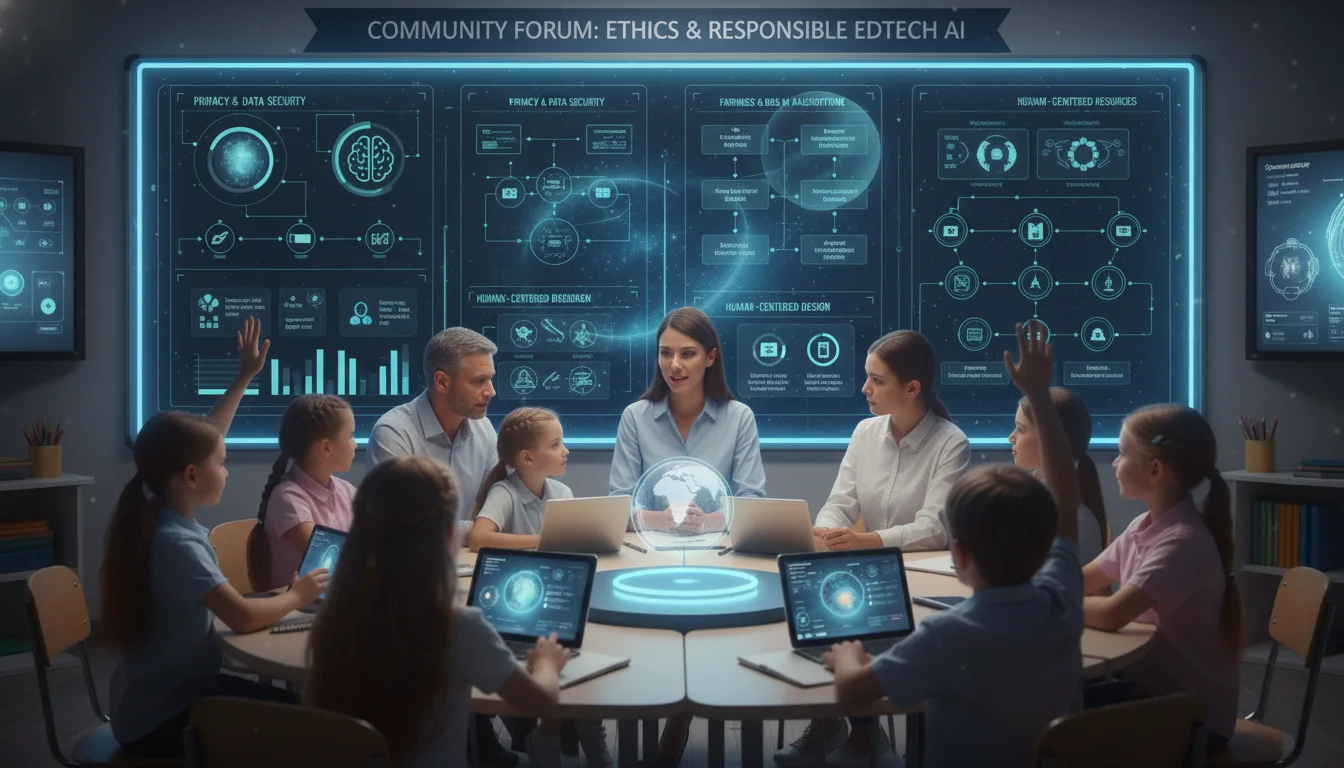
Ethics and Empathy: Navigating AI Integration Responsibly
The expansion of AI for teachers into classrooms has prompted vital questions around privacy, technology equity, bias, and the boundaries of automation. Teachers must act as both ethical stewards and advocates for student well-being. The core principle guiding all AI use in schools should be: does this technology help humans flourish, and are we deploying it fairly?
First, privacy and data security are non-negotiable. As AI collects ever more information—from facial expressions to writing samples—it must be governed by strict, transparent data protection protocols. Schools should communicate these measures to parents and students, ensuring consent and understanding are foundational, not optional.
Bias is another concern that teachers must evaluate. Algorithms are only as just as the data they are trained on, and if that data is biased, so will be their recommendations. Teachers should demand transparency from EdTech providers and participate in ongoing professional development to spot, report, and rectify inequities. ‘Algorithmic literacy’ is quickly becoming as crucial as digital literacy for the modern educator.
Empathy remains the heart of great teaching. No matter how advanced AI becomes, it cannot replicate the subtle grace of a supportive look, the encouragement in a tone of voice, or the intuition that senses when a student is struggling beneath the surface. Teachers should use EdTech AI to amplify—not substitute—their most human qualities.
Finally, responsible AI in education means preparing students to become critical, ethical users themselves. Teachers can model critical questioning of AI outputs, facilitate debates around technology’s role, and teach students to use digital tools to support—not dominate—their lives. In doing so, they build digital citizens ready to thrive in an uncertain future.
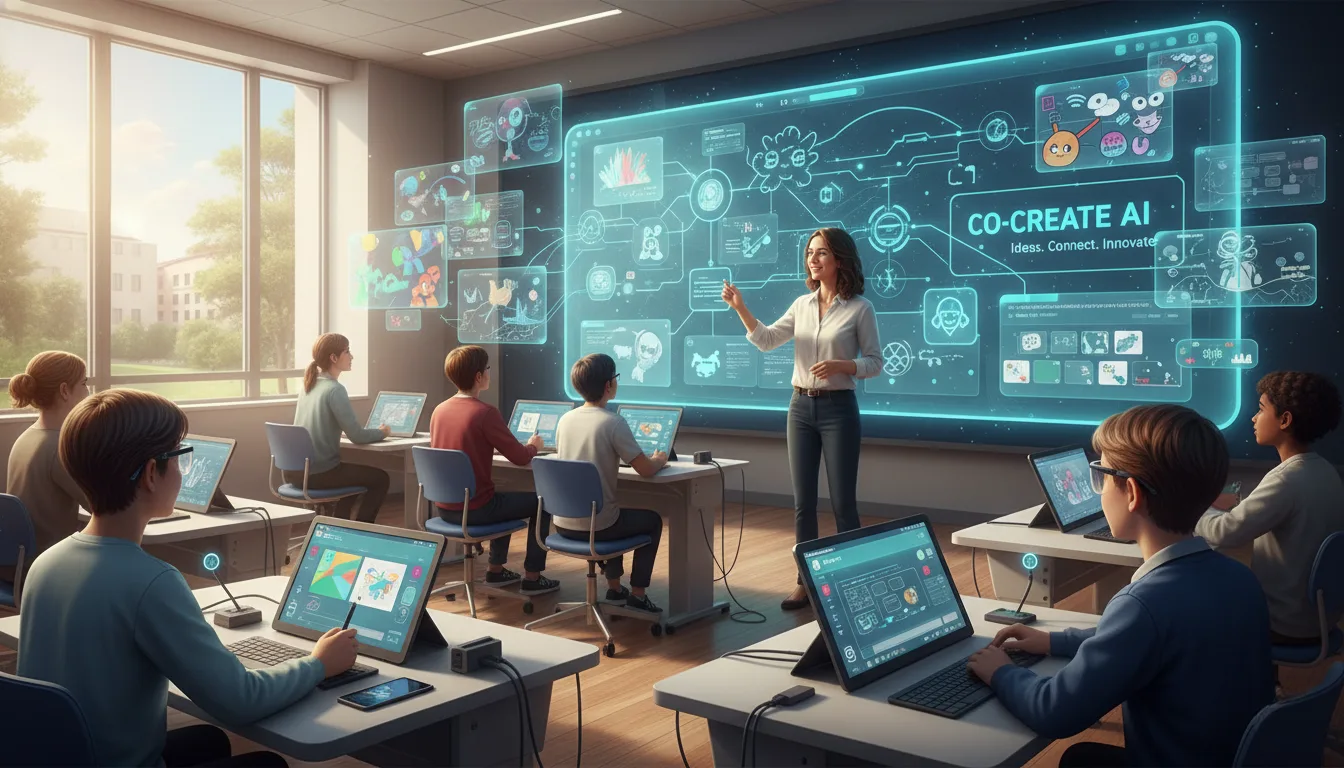
AI as a Creative Partner: Fostering Innovation and Engagement
When used creatively, AI for teachers unlocks possibilities for student engagement that were unthinkable just a few years ago. Instead of static lectures or textbook-driven classes, teachers can now create immersive, interactive experiences tailored to every learning style—even on a budget or with limited resources.
One area seeing explosive growth is content creation. Teachers can use generative AI to co-design interactive visualizations, real-world problem scenarios, and even multi-path stories that bring subjects to life. For instance, history lessons can use AI-powered roleplay tools to let students “meet” historical figures or debate turning points, while science teachers can design AI-generated lab simulations for home-based learning.
Assessment is no longer confined to paper. With EdTech AI, teachers can engage students in gamified quizzes, instant polls, or creative multimedia projects scored dynamically by the system. Feedback is immediate, personalized, and tied to clear learning objectives. Students are motivated not just by grades, but by the experience of mastering content in ways that feel meaningful to them.
Collaboration reaches new heights as well. Virtual whiteboards, language translation features, and AI-driven research assistants make group projects accessible for every learner, regardless of geography or background. Teachers become facilitators of rich discourse and creative problem solving, drawing on resources far beyond their classroom walls.
Lastly, AI empowers teachers to experiment and reflect. By analyzing student reactions and outcomes, instructors can refine lesson plans and try new approaches without the fear of failure. With AI as the creative assistant, every classroom becomes a laboratory of learning innovation.

Professional Development: Teachers as Lifelong Learners in an AI World
For AI for teachers to reach its full potential, educators themselves must become lifelong learners, continuously updating their skills and mindsets to keep pace with technology. The most successful teachers don’t just adopt AI—they master it, shaping their classrooms and their careers on the cutting edge of educational practice.
Professional development now includes AI literacy. Teachers are training to understand how algorithms make decisions, how to interpret analytics, and how to select EdTech tools that align with their goals and values. Online courses, peer learning forums, and digital certifications democratize access to the latest knowledge, opening doors for teachers everywhere to become innovators.
Global communities have emerged where teachers share best practices, lesson templates, and even “AI hacks” for classroom management. By drawing on this networked intelligence, teachers can solve challenges faster, personalize professional growth, and stay ahead of change. This spirit of collaboration over competition is powering a new age of educational leadership.
Upskilling isn’t just for new teachers, either. Veteran educators are using EdTech AI to refresh old lesson plans, track their effectiveness, and experiment with hybrid modalities. The willingness to try, fail, and adapt is what distinguishes teachers who thrive in the age of AI from those who simply get by.
Finally, schools that invest in robust professional support experience lower turnover and higher morale. Teachers who feel empowered, not threatened, by AI are more likely to inspire students to see technology not as a barrier, but as a bridge to brighter futures.

The Future of Classroom Collaboration: Teachers and AI Working as a Team
Looking ahead, the partnership between educators and AI for teachers is only set to strengthen. Already, the most innovative schools see teachers and AI as a dynamic team—each enhancing the other’s strengths. Far from turning learning into a cold transaction, this partnership fuels human connection and makes learning deeply relevant, flexible, and inspiring.
Imagine classrooms where AI anticipates learning gaps even before quizzes are given, where virtual teaching assistants translate lessons instantly into any language, and where real-time data visualization helps teachers adjust strategies instantly. These aren’t futuristic dreams; they’re active realities in pioneering schools across the globe.
EdTech AI will increasingly handle the background heavy lifting—routine grading, attendance, formative assessment analytics—leaving teachers free to be creative leaders, mentors, and motivators. This human–AI synergy is resulting in classes with better differentiated instruction, stronger student-teacher relationships, and sharper outcomes for all types of learners.
Rather than standardizing teaching, AI is giving rise to an era of radical customization. No two classrooms will be the same, and each teacher will leave a unique imprint, inspired and informed by data but powered by their own vision and empathy. In this new world, schools become creative hubs where every individual can flourish.
Above all, the best classrooms of the future will blend human wisdom with digital precision, ensuring that technology serves as a means to greater engagement, access, and equity—not an end unto itself.
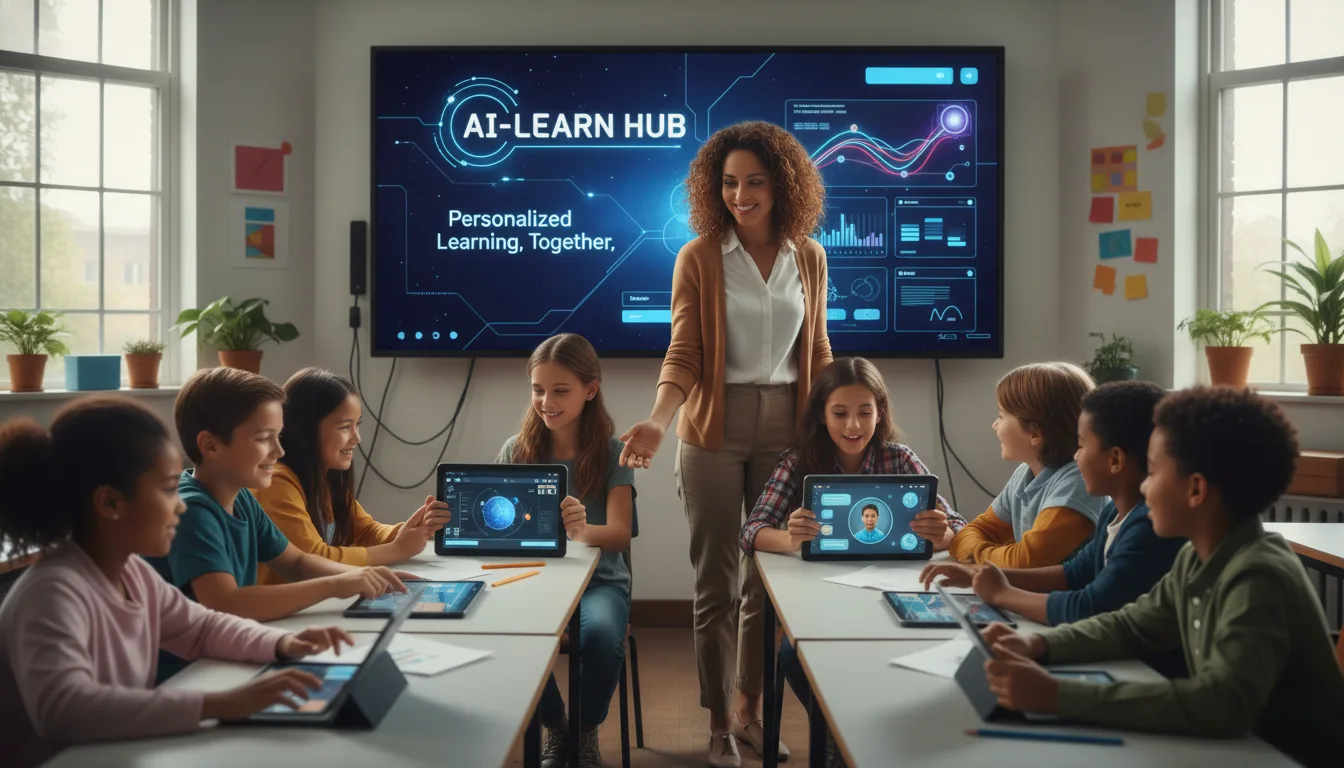
Final Thoughts: The Enduring Importance of Teachers in the AI Age
In every era, great teaching remains about connection, imagination, and empowerment. As AI for teachers reshapes education, those core elements become even more vital. The most advanced technology cannot replicate a teacher’s intuition, compassion, or the ability to inspire. EdTech AI should never be seen as a substitute but as a superpower that magnifies what the best educators already do: spark growth, foster belonging, and change lives.
The future is not a choice between AI and teachers. It’s a future where the two work together to deliver learning experiences tailored to every student’s needs and aspirations. Schools that lead in both technological adoption and human-centered practice will create communities where opportunity and innovation are available to all.
As the boundaries of classroom learning expand, the teacher’s role as a mentor, guide, and ethical leader is more valuable than ever. AI allows them to be both more efficient and more deeply present with students—offering the structure needed to teach effectively and the freedom to connect authentically.
To every teacher ready to embrace AI: trust in your power to adapt, grow, and lead. The tools at your disposal are greater than ever before, but your impact—measured in human flourishing—remains immeasurable.
For more in-depth insights and the latest trends on educational technology and teaching in the digital age, follow AI Tech Unboxed—your guide to the future of inspired learning.
FAQs on AI for Teachers
1. How does AI for teachers actually change day-to-day teaching practice?
AI streamlines lesson planning, assessment, and feedback, empowering teachers to dedicate more time to high-impact activities such as mentoring, creative instruction, and relationship-building with students.
2. Can EdTech AI personalize learning for every student, including those with special needs?
Absolutely. Modern AI tools adapt lessons to each student’s pace, style, and needs—helping teachers design accommodations for neurodiverse students, English learners, and those with disabilities.
3. What should teachers and schools know about student data privacy with AI?
Responsible AI use requires strong data privacy, transparency, and consent protocols, ensuring that all student information is used ethically and securely.
4. Is AI in education expensive or only for elite schools?
Not at all. Many AI-powered tools are open-source or low-cost, making it possible for schools of all sizes and budgets to benefit from cutting-edge educational technology.
5. What professional development is needed for teachers to thrive alongside AI?
Teachers benefit from ongoing AI literacy training, access to global communities for sharing best practices, and opportunities to experiment with new tools while maintaining their educational vision and values.
6. How can AI for Teachers support teachers’ professional growth and lifelong learning?
AI for Teachers platforms offer personalized professional development by recommending tailored training modules, connecting educators to global communities, and providing real-time classroom analytics. This helps teachers continually upgrade their skills, stay updated with EdTech AI trends, and collaborate with peers for better teaching outcomes.
